
SUNDAY, JUNE 16, 2024
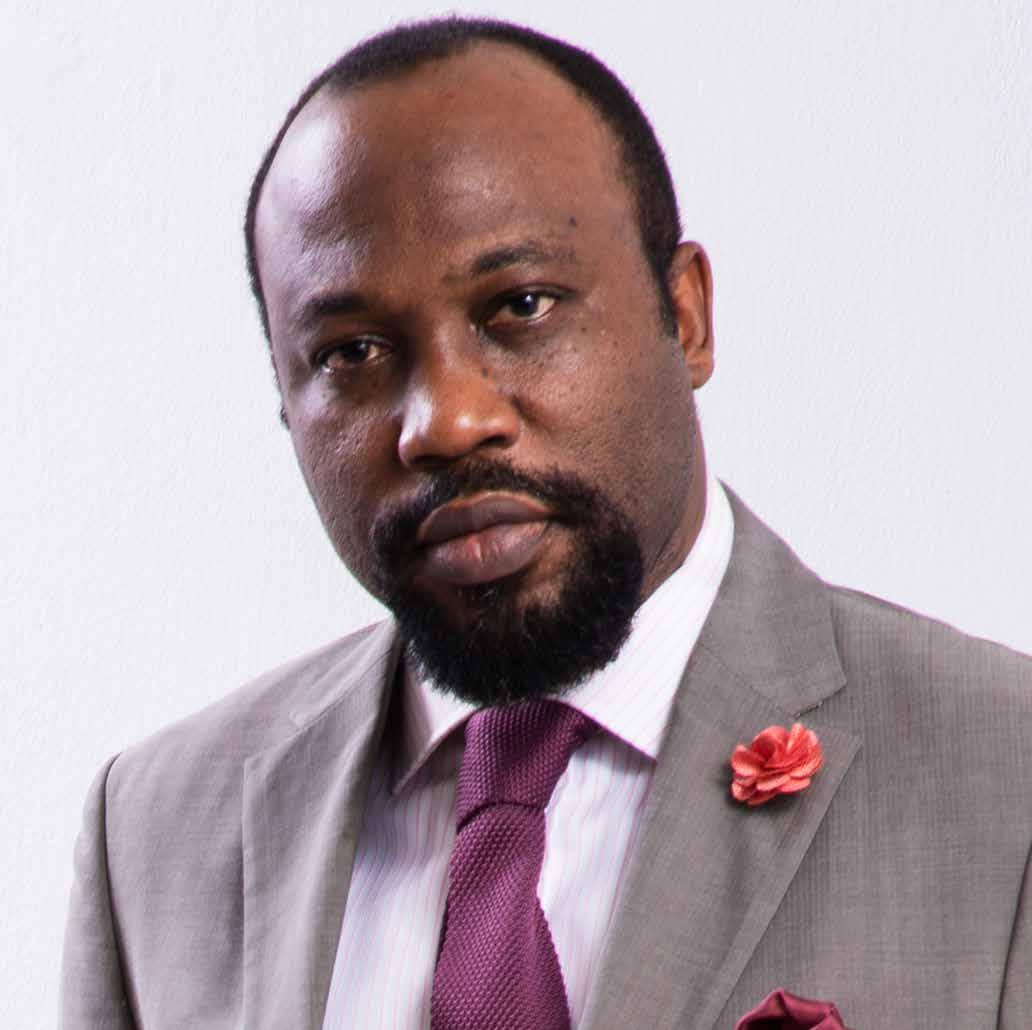

...NOT IN THISDAY STYLE? THEN YOU’RE NOT IN STYLE CONTINUING A LEGACY OLIVER ENWONWU
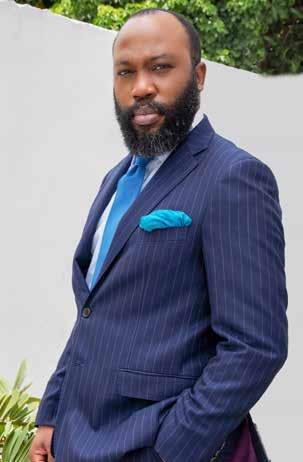


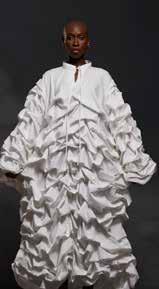



First of all, would like to wish every man who has ever loved a child as his own a Happy Father’s Day. Yes, today is the day we celebrate the men who have stepped up and taken on the role of father, whether by blood or by heart. For those of you fortunate enough to spend the day with your fathers, please make the best of it. Even if it’s as simple as giving him a hug and telling him, “Daddy, love you.” Trust me, it will go a long way. There’s something incredibly powerful about expressing love and appreciation, especially to the men who often wear a brave face and carry the weight of their families on their shoulders.
You know, have noticed that for us younger ones, our relationships with our fathers are evolving, and I really do love how the narrative is changing. Gone are the days when dads were merely the stern disciplinarians or the distant breadwinners of the family. Lately, fathers are embracing a more hands-on, emotionally tuned approach to parenting, and it’s just so beautiful to watch. Now, fatherhood is about more than providing; it’s about being present. A New Era in Fatherhood takes a closer look at this.
On a completely different note, who else has been following the viral story of the disappearances of Celine Ndudim and Afiba Tandoh? They reportedly vanished after meeting up with a friend they had connected with online. With all its twists and turns, it’s literally the craziest story have heard this year. The scariest part is that it could happen to anyone, as we live in a digital age where making friends from online interactions is almost second nature.
I’ve met strangers online who have literally grown to become family. While we can’t avoid these interactions, we can take precautions to ensure our safety. The tips in the article “Staying Safe While Finding Romance Online” are incredibly helpful and can go a long way in helping you navigate online to real-life relationships better.
We are almost at the end of the year’s first half. How has it been for you? Tough? Well, if you’re still breathing, then you are winning regardless. If, on the other hand, you have had a beautiful six months? Then I assure you the next six will be even better.
How’s your day going? Factoring in the holidays, it will be a very long weekend, and I hope you make the best of it.
Have a fabulous and blessed week ahead. From me, it’s Happy Father’s Day to my dad, Chief Egorum Nwabogor, and to all the numerous father figures in my life. You all are the lights that guide my path. I love you all and appreciate your presence in my life—blessings to each and every one of you.
Love,

Hertunba has recently revealed her latest collection, ‘Lula Land’. This collection celebrates Nigerian cultural aesthetics and the women who wear them proudly, featuring pieces like the Coat of Many Colors kaftan, which combines indigenous weaving techniques from all over Nigeria.”
Lula Land is inspired by an imaginary place of solace filled with unparalleled joy and laughter.
In this collection, the designer Florentina Agu revisits a vacation island she used to visit as a child. This island, which she fondly refers to as Lula Land, was a place of solace and joy for her. When things got tough, she’d close her eyes and escape to this beautiful land where only women lived. All the women there looked happy and wore the brightest colours and the fluffiest clothes. This imaginary vacation island saw her through the most challenging times in her life, and here, she’d see clothes that looked like nothing she had seen before. When she was there, nothing else mattered, and she was at peace. The designs in this collection are a reflection of the joy and freedom she experienced in Lula Land, and her desire to share that with the world.
Although whimsical and evoking a dreamscape, the Lula Land collection is grounded in the designer’s passion for preserving memory and heritage. The pieces in this collection boast age-old indigenous weaving practices that are getting lost in modernity. The spin on Akwete, Aso-oke, Itive, and Ivavtyo, all gifts of indigenous crafts passed down through generations, embodies the designer’s deep respect for culture.
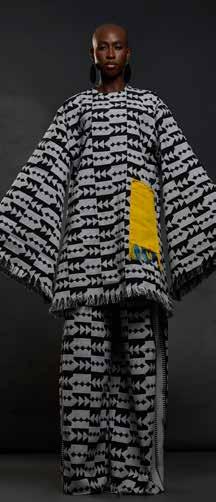


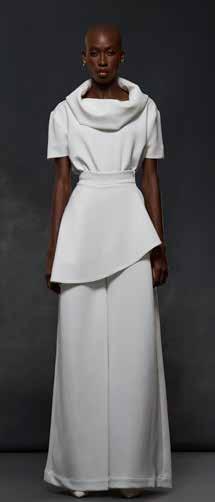
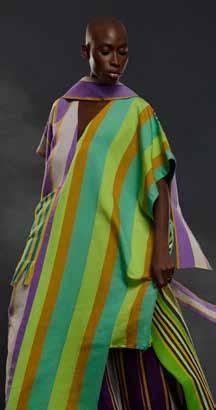
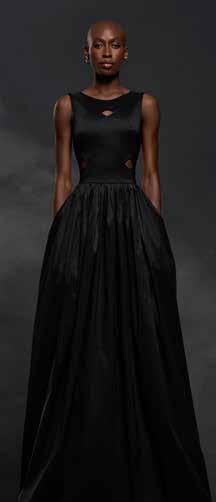
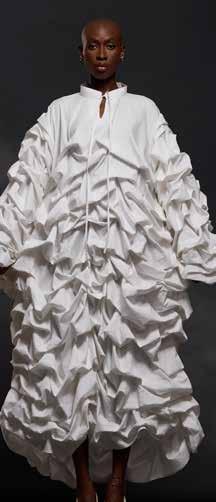
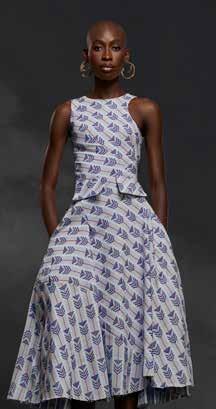
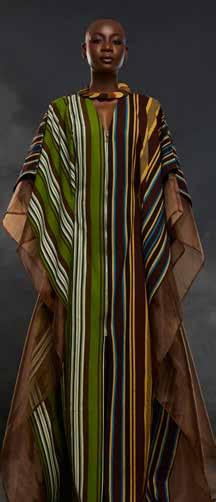
CONTENT CONTENT 6
S yle COVER NOTE EDITOR’S LETTER EXECUTIVE EDITOR KONYE NWABOGOR 08111847087 DEPUTY EXECUTIVE EDITOR OLUFUNKE BABS-KUFEJI 08111847086 SENIOR DESIGNER MATHIAS ARCHIBONG 07054965500 GUEST CORRESPONDENT YOMI OWOPE CONTRIBUTORS AZUKA OGUJIUBA DIDEE ETA AYO LAWAL BUKOLA AMOBOYE RUKY SALAKO KEJUO LEKAN PHOTOGRAPHER TY BELLO DIRECTOR, PRINT PRODUCTION CHUKS ONWUDINJO 08077092196 @thisdaystyle | @thisdaystyleon www.thisdaystyle.ng
EXECUTIVE EDITOR
Konye
WHEN BROADCAST BIMBO OLOYEDE COMMANDED STAGE AGAIN broadcaster icon, Oloyede gathered shakers of society exclusive highbrow Victoria Island, presentation of her new “Command Your Stage,” a interrogation and dissection speaking through down approaches she built a that most often elevating his aura just to annul public speaking that has control, element is an thinking, making or such regularity becomes competent and skilled his thoughts order. was written Lagos State Works and Babatunde Raji Fashola, book review broadcaster Bako, OON BIMBO OLOYEDE OLATUNDE OLOYEDE BUKOLA OLOYEDE ADEOLA KINGSLEY-JAMES CHIEF DELE MOMODU DR. DANLADI BAKO BISI OLATILO H.E DONALD DUKE JIDE BENSON ROBERTA OKEREKE MOTUNRAYO ALAKA FOLA ADEOLA OLUWASEUN OLANIYAN CHIEF DR. JOHN ODEYEMI DEYEMI OKALAWON DANIEL NNWOKA LAMIDE AKINTOBI BARRISTER PRADA UZODIMMA ISABELA ADEDEJI MRS OSAI ALILE MOJIBADE SOSANYA OSCAR OYINSAN ROYAL HIGHNESS, ERELU ABIOLA DOSUNMU MRS GBEMI SHASORE H.E ALHAJA SINATU OJIKUTU 10 19 Society WHEN BROADCAST ICON, BIMBO OLOYEDE COMMANDED HER STAGE AGAIN Veteran broadcaster icon, Bimbo Oloyede gathered movers and shakers of society recently at the exclusive highbrow Metropolitan Club, Victoria Island, Lagos, for the presentation of her new book titled “Command Your Stage”. Oliver Enwonwu, the son of renowned artist Ben Enwonwu, is a chip off the old block. Like his father, he is a highly respected Nigerian artist who has significantly impacted the art world with his unique style and creative vision Lifestyle & Fashion 8 3 9 10 17 18 19 20 22 23 A New Era Of Fatherhood Intermittent fasting: Everything You Need to Know The Complete Guide to Achieving A Full Body Glow Hertunba’s Lula Land Dolapo Amusat: Bridging the Gap Between Tech and Creativity Every Man Should Have A Skincare Routine Is Expensive Skincare Really Better? Styling Tips: How To Mix High And Low Fashion The Survivors Staying Safe While Finding Romance Online HERTUNBA’S LULA
Happy Father’s Day,
LAND
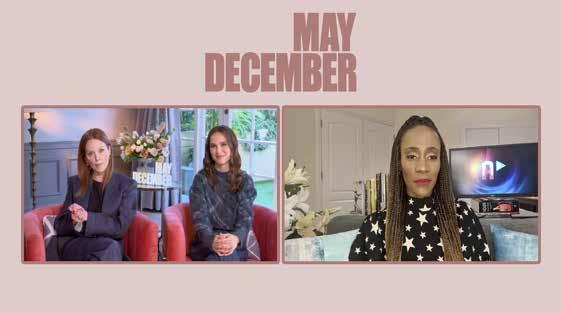

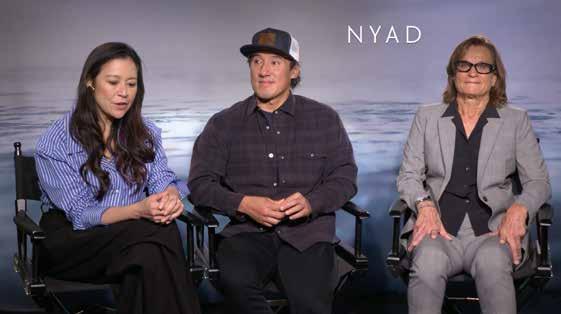

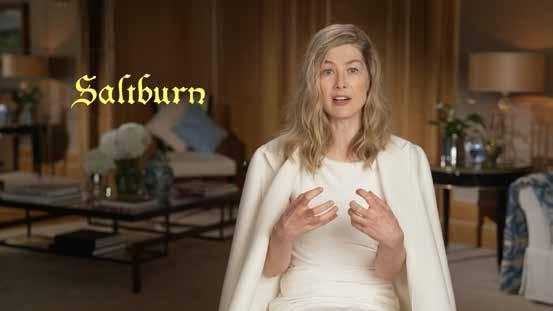
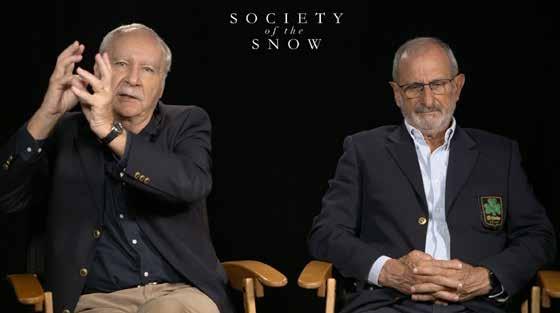
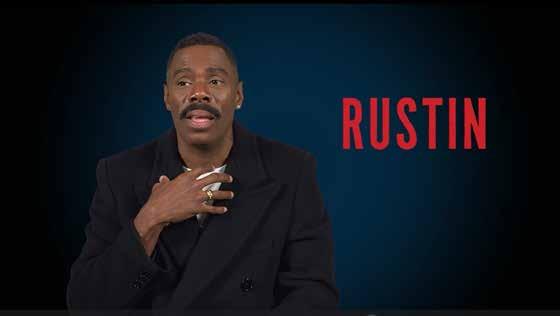

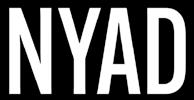


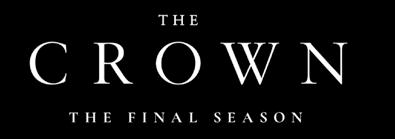

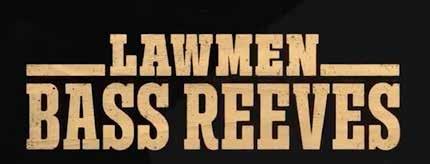

SUBSCRIBE TODAY AND STREAM EXCLUSIVE INTERVIEWS ONLY ON WWW.ARISEPLAY.COM Originals ARISEPLAY ORIGINALS PRESENTS An inside look at global movies creating the most buzz in the run-up to awards season
WHEN BROADCAST ICON, BIMBO OLOYEDE
COMMANDED HER STAGE AGAIN
Veteran broadcaster icon, Bimbo Oloyede gathered movers and shakers of society recently at the exclusive highbrow Metropolitan Club, Victoria Island, Lagos, for the presentation of her new book titled “Command Your Stage,” a 272-page interrogation and dissection of the art of public speaking through a narrative of laid down approaches and mindset in which she built a strong extrapolation that most often portends a speaker elevating his aura beyond the audience just to annul fear. She noted that public speaking is also like science that has control, because the basic element is an “acquired habit of thinking, making or doing something with such regularity that the practitioner becomes unconsciously competent and skilled in the art of organising his thoughts and ideas in a logical order.
The book’s foreward was written by former governor of Lagos State and former minister of Works and Housing, Mr Babatunde Raji Fashola, CON, SAN. While the book review was handle by veteran broadcaster Dr. Nasir Danladi Bako, OON
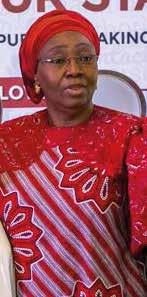


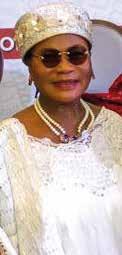
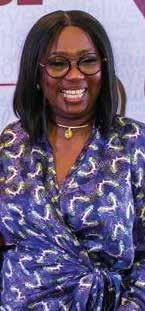
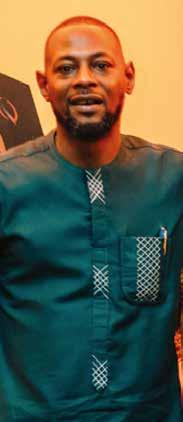



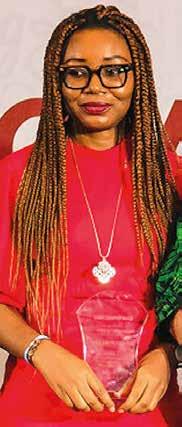



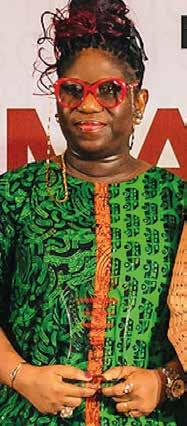


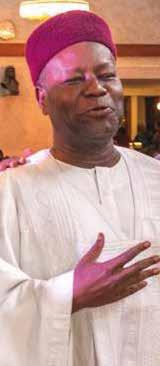
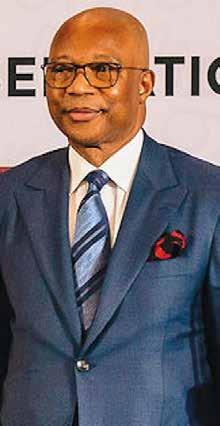
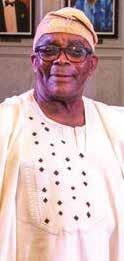



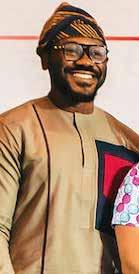

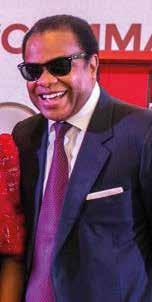
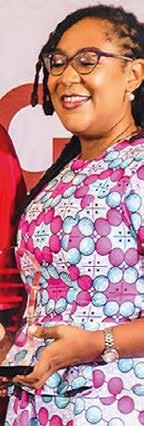
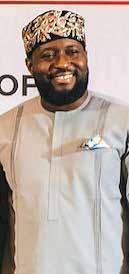
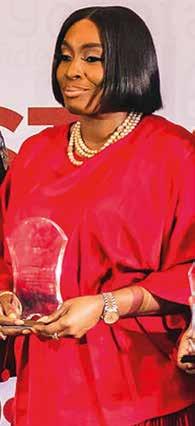
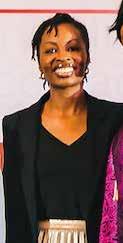

BIMBO OLOYEDE OLATUNDE OLOYEDE BUKOLA OLOYEDE ADEOLA KINGSLEY-JAMES CHIEF DELE MOMODU DR. DANLADI BAKO BISI OLATILO H.E DONALD DUKE
BENSON ROBERTA OKEREKE MOTUNRAYO ALAKA FOLA ADEOLA OLUWASEUN P. OLANIYAN CHIEF DR. JOHN ODEYEMI DEYEMI OKALAWON DANIEL NNWOKA LAMIDE AKINTOBI BARRISTER PRADA UZODIMMA ISABELA ADEDEJI MRS OSAI ALILE MOJIBADE SOSANYA OSCAR OYINSAN H.E DAME ABIMBOLA FASHOLA ROYAL HIGHNESS, ERELU ABIOLA DOSUNMU MRS GBEMI SHASORE H.E ALHAJA SINATU OJIKUTU MRS ADEOLA AZEEZ Sunday, June 16, 2024 Vol. 22, No. 10624 Sunday, June 16, 2024 Vol. 22, No. 10624 6 7
JIDE
STAYING SAFE WHILE
FINDING
ROMANCE ONLINE

In recent news, the disappearances of Celine Ndudim and Afiba Tandoh have reignited pressing concerns about the safety of online interactions, especially when it transitions from digital chats to real-world meetings. These young women reportedly vanished after arranging to meet a friend they had connected with online. As we increasingly inhabit a digital world, where meeting someone online is as common as a morning coffee run, it’s crucial to discuss and understand the nuances of online safety in the context of romantic encounters.
The internet has undeniably revolutionised how we connect, offering myriad platforms for people to find companionship, love, and lasting friendships. However, the anonymity and accessibility that make online dating appealing also have potential risks. Although not entirely waterproof, here are some tips to help you navigate this space safely.
1. Research and Use Reputable Dating Platforms
Start with choosing a reputable dating platform. Well-known sites tend to have robust safety features and are more diligent in removing fake profiles and scammers. Look for platforms that require identity verification and offer privacy settings that allow you to control who can see your profile and contact you.
2. Keep Personal Information Private
In the initial phases of online interaction, keep personal information private. This includes your last name, address, workplace, and any other details that could be used to track you offline. Be wary of sharing too many specifics about your daily routine until you have established trust.
3. Take It Slow
One common tactic used by those with malicious intent is rushing intimacy. They may profess love or a deep connection quickly to lower your defences. It’s important to take time to really get to know the person on the other end of the chat. Healthy relationships, whether online or off, do not rush.


4. Verify Their Identity
In the digital age, verifying someone’s identity can be as simple as a video call. Platforms like Skype, Zoom, or even FaceTime enable you to confirm the identity of the person you’re communicating with. This also helps ensure the person matches the photos on their profile and can alleviate potential fears of catfishing.
5. Meet in Public Places
When the time feels right for a face-to-face meeting, choose a public place like a cafe, a restaurant, or a busy park. These settings offer safety in numbers and provide a neutral ground for getting to know the person without the pressure of a more intimate setting.
6. Inform Friends or Family of Your Plans

Always let someone you trust know where you’re going and who you’re meeting. Provide them with as much information as possible, such as the name and contact information of the person you’re meeting, the time and place of your date, and when you expect to return. It’s also a good idea to send a message or call at a specific time to

STYLING TIPS: HOW TO MIX HIGH AND LOW FASHION
confirm your safety.
7. Trust Your Instincts
Your instincts are a powerful tool in assessing whether situations feel right or not. If something feels off about the person or the arrangement, trust your gut and postpone or cancel the meeting. Any reasonable person will understand concerns for safety.
8. Use Built-In Safety Features
Many dating apps have built-in safety features, such as reporting suspicious profiles, blocking users, or sending SOS messages. Familiarise yourself with these features before you start using the platform.
9. Stay Sober
Maintaining a clear mind is crucial on a first date. Avoid excessive alcohol or any substances that could impair your ability to make decisions or manage a situation.
10. Have a Safety Plan
Finally, have a safety plan in place. This could involve having a friend call you at a specific time during the date or setting up your own transport rather than depending on someone else. Knowing you have an exit strategy can provide peace of mind.
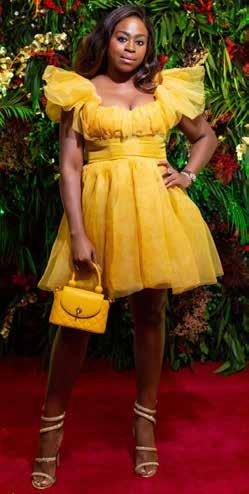
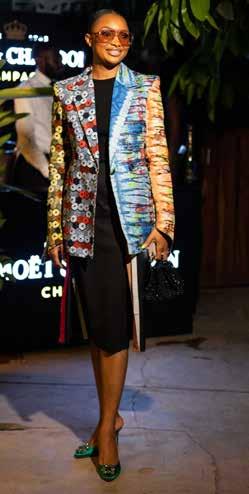
The line between high-end luxury items and accessible streetwear continues to blur, giving rise to the art of “high-low” fashion. This trend embraces a mix of investment pieces with affordable staples, creating a balanced, stylish look that’s as unique as it is economical. You, too, can master the high-low mix and make fashion statements that resonate with both luxury and practicality by following these tips.
1. Start with Staples
The bedrock of any high-low ensemble begins with your staple items. For the high part, invest in timeless pieces like a great pair of designer jeans, a standout dress, or a luxury handbag—items that often come with a higher price tag but justify their cost through their durability and versatility. Your low-fashion items can be trendy pieces from fast-fashion brands, seasonal accessories, or even playful graphic tees that keep the look fresh and anchored in the current zeitgeist.
2. Master the Mix
The key to mastering the high-low mix is balance. Pair a basic white T-shirt from a high street brand with a designer blazer. The idea is to allow each piece to complement the other rather than compete. For instance, a lush silk scarf can elevate an ensemble of unassuming basics, while a statement designer shoe can turn heads even if the rest of the outfit came off a clearance rack.
3. Play with Patterns and Textures
Mixing high and low is also about playing with patterns and textures to create visual interest. A brocade skirt from a luxury brand can beautifully contrast with a simple cotton top from a mass-market store. Leather and denim, silk —these juxtapositions make an outfit exciting and eye-catching. Remember, textures can add as much value to your appearance as a splash of expensive fabric.
4. Accessorise Wisely
Accessories are the easiest and often most cost-effective way to mix high and low fashion. A well-chosen piece of jewelry, an expensive pair of sunglasses, or an artisanal handbag can elevate any outfit. Conversely, playful costume jewellery can add a fun twist to a more subdued or upscale look.
5. Know When to Splurge and When to Save
Developing a keen sense of what to buy high and what to buy low is crucial. Invest in high-quality basics that will last and will stay in style. Save on trendy or seasonal items—like bold, of-the-moment prints or ultra-trendy shapes that may not stand the test of time.
6. Personalise Your Palette
Embrace your personal style. The high-low mix has no onesize-fits-all formula; it’s about what works for you. You may be someone who loves a splash of colour, or perhaps understated chic is more your vibe. Whichever it is, make sure your high-low selections reflect your individuality.
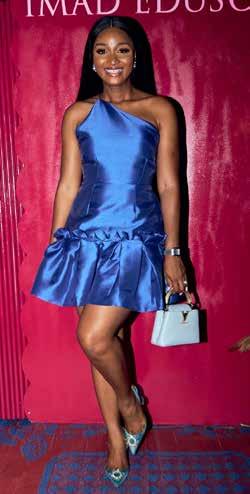
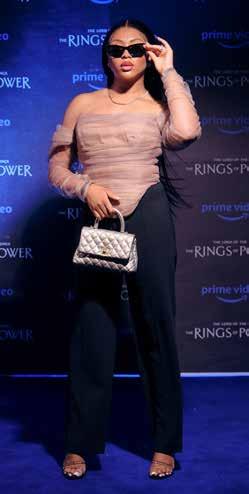
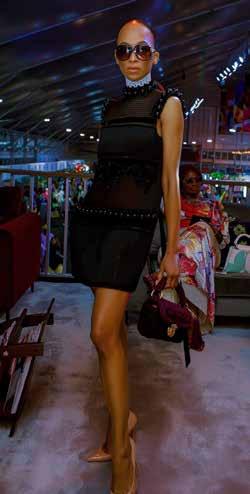 OLUCHI AMAJUOYI
OZINNA ANUMUDU
ADESUWA AIGHEWI
STEPHANIE COKER
OLUCHI AMAJUOYI
OZINNA ANUMUDU
ADESUWA AIGHEWI
STEPHANIE COKER
NOW OVER A MONTH CELINE NDUDIM AND AFIBA TANDOH ARE STILL MISSING AFTER MEETING UP WITH ANDREW OCHEKWO WHO THEY HAD CONNECTED WITH ONLINE. Sunday, June 16, 2024 Vol. 22, No. 10624 Sunday, June 16, 2024 Vol. 22, No. 10624 8 9
POWEDE AWUJO
A NEW ERA OF
FATHERHOOD
Gone are the days when dads were merely the stern disciplinarians or the distant breadwinners of the family. Today’s fathers are breaking moulds and embracing a more hands-on, emotionally tuned approach to parenting, redefining what it means to be a dad in the 21st Century.
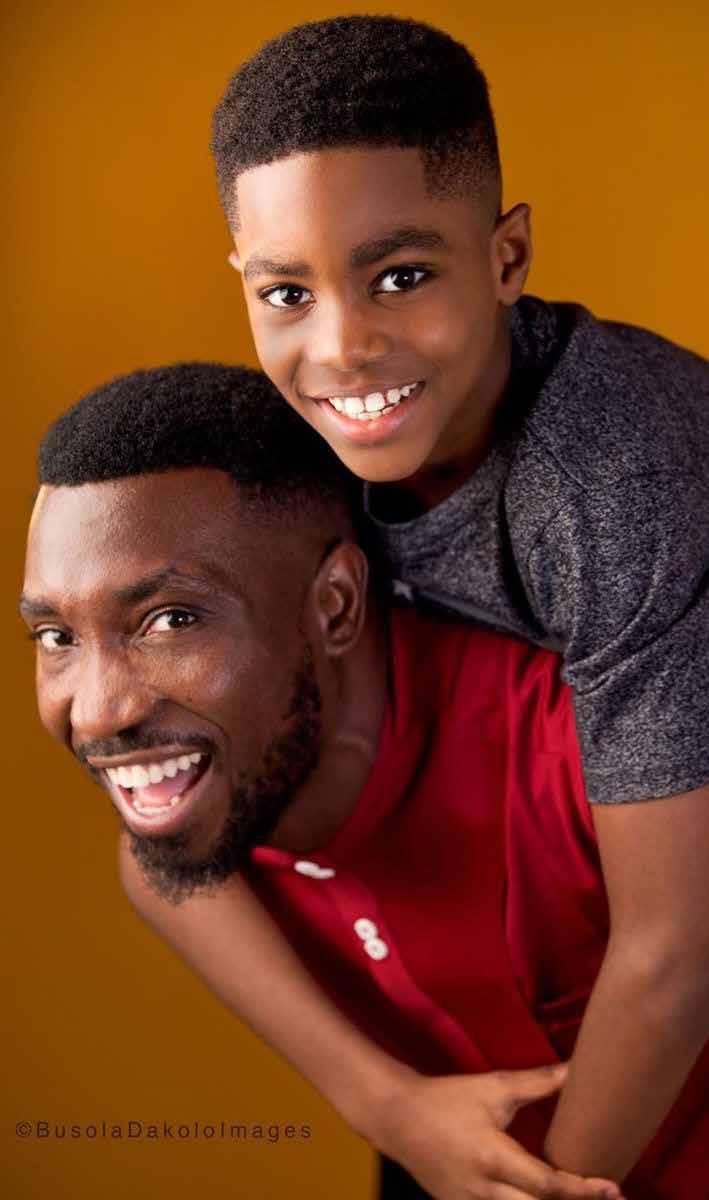

In the not-so-distant past, the typical image of a father might have been a man returning home from work, briefcase in hand, just in time to pat his kids on the head before bedtime. Fast forward to today, and the dynamics of fatherhood have transformed dramatically. Modern dads are challenging old stereotypes and redefining what it means to be a father in today’s world.
The evolution of the modern dad can be seen in various dimensions of family life. From sharing household responsibilities to being actively involved in childcare, dads today are embracing roles that were once primarily associated with mothers. The change is not just anecdotal; it is supported by increasing sociological research and demographic trends showing that fathers are seeking a more hands-on, emotionally fulfilling connection with their children. In this new era, modern dads are just as likely to be seen changing diapers, mastering the art of French braiding for school mornings, or diligently doing school runs as their female counterparts. These changes are not just about sharing the workload; they’re about embracing all aspects of parenting with open arms and a full heart.
Changing Perspectives
Why the shift? Societal changes and evolving gender norms have played significant roles. As more mothers have entered the workforce, parenting has naturally transitioned to a more equal sharing of duties. Moreover, cultural shifts have encouraged men to redefine masculinity, allowing them to express nurturing qualities without stigma.
But it’s not just about sharing chores and changing diapers. Modern dads are also redefining their roles within the emotional landscape of the family. Fathers today are just as likely as mothers to be seen comforting their child after a bad dream or discussing their child’s day in detail. This emotional availability is a significant shift from the more stoic, reserved father figures of the past.
Supportive Systems and Challenges
Despite the progress, many dads still face societal expectations to prioritize work over family life, and the balance between the two can be precarious. Additionally, the journey of redefining fatherhood isn’t uniform across cultures and economic backgrounds, making it clear that
In some cultures, the changing role of dads has sparked a broader conversation about masculinity and vulnerability. It’s a powerful shift that not only affects how men perceive themselves but also how they are perceived by society. This redefinition can lead to healthier lifestyles, improved mental health, and stronger family bonds.
there’s still much work to be done to ensure all fathers have the opportunity to be involved in their children’s lives in meaningful ways. Workplace policies, for instance, have been slow to catch up with changing family dynamics. While maternity leave is a well-established concept, paternity leave is still battling for recognition and acceptance in many parts of the world. The good news is that there’s growing awareness and advocacy for paternity rights, which is helping to gradually reshape policies.
The Impact on Children
The involvement of fathers in active parenting has been shown to have profound benefits for children. Studies have linked positive father involvement with better social, emotional, and educational outcomes in children. Kids with engaged dads are often more confident, better able to handle stress and develop stronger social bonds. Moreover, seeing their fathers in nurturing roles helps to break down gender stereotypes for the next generation. Both sons and daughters benefit from seeing their fathers embrace caregiving and emotional support roles, setting a new standard for what they might expect from male figures.
The Cultural Lens
However, the modern dad’s narrative varies widely across different cultures. While some societies have embraced these changes rapidly, others are on a slower trajectory. It’s fascinating to see how the concept of fatherhood is being reinvented globally, influenced by local customs, economic conditions, and social norms.
In some cultures, the changing role of dads has sparked a broader conversation about masculinity and vulnerability. It’s a powerful shift that not only affects how men perceive themselves but also how they are perceived by society. This redefinition can lead to healthier lifestyles, improved mental health, and stronger family bonds.
The essence of what it means to be a dad in the 21st Century will continue to evolve. With each small step forward, we not only pave the way for more fulfilling father-child relationships but also contribute to a broader cultural shift that values and supports active fatherhood. Modern dads are not just redefining fatherhood; they’re revolutionizing it, demonstrating that being a good parent isn’t about adhering to traditional roles but about loving and leading with heart and courage. And in this brave new world, the role of dads is not just important—it’s indispensable.


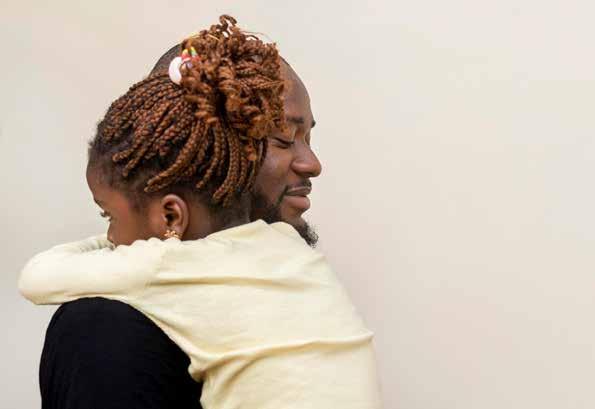


DAKOLO AND HIS SON ALEXANDER
TIMI
Sunday, June 16, 2024 Vol. 22, No. 10624 Sunday, June 16, 2024 Vol. 22, No. 10624 10 11
BOVI UGBOMA AND HIS SONS DAVID AND CHUCHU

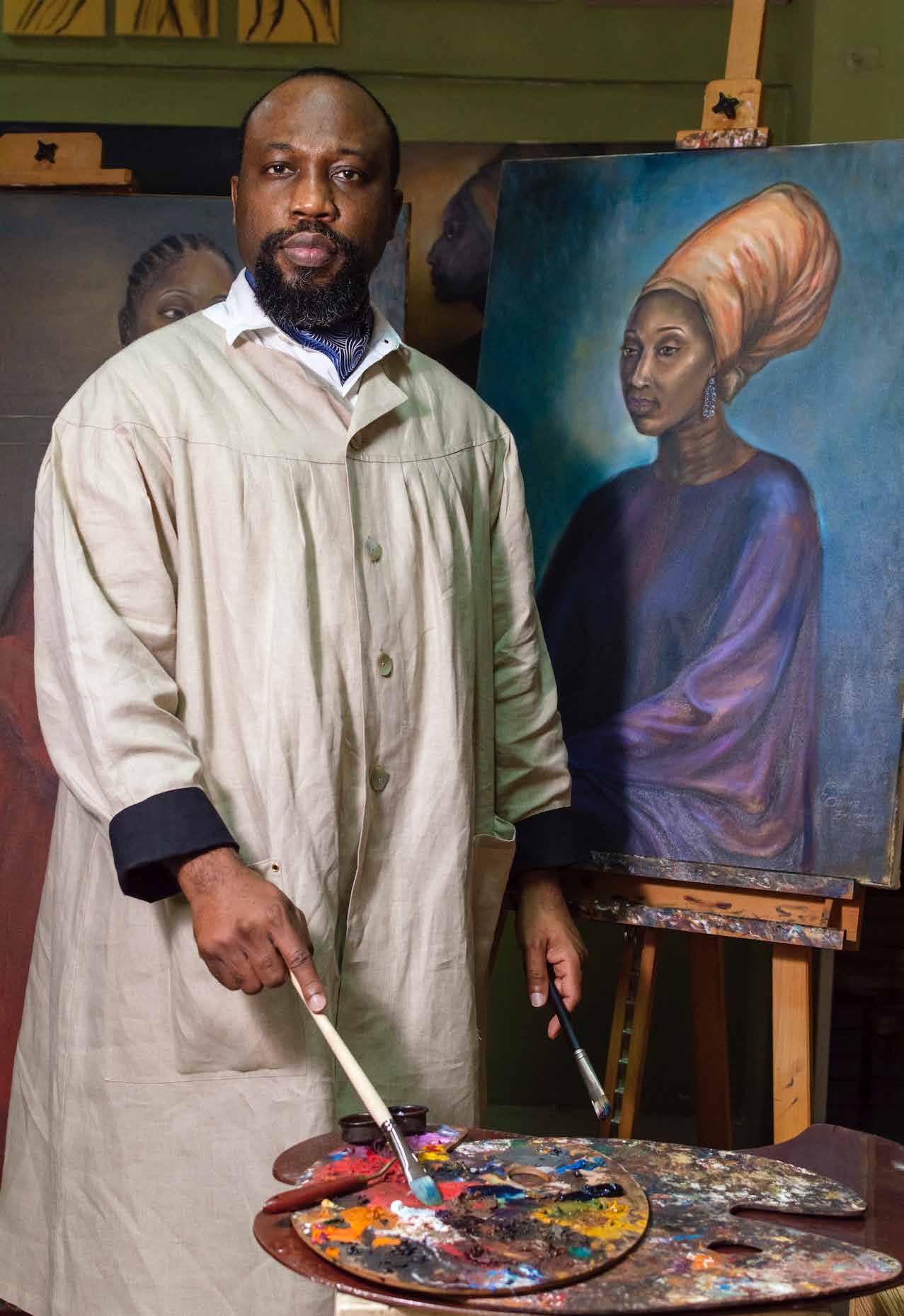
OLIVER ENWONWU
CONTINUING A LEGACY
Oliver Enwonwu, the son of renowned artist Ben Enwonwu, is a chip off the old block. Like his father, he is a highly respected Nigerian artist who has significantly impacted the art world with his unique style and creative vision. Born in 1974 in Lagos, Nigeria, Oliver comes from a family of artists, as his grandfather was a reputed traditional sculptor, while his father, Ben Enwonwu, was a renowned Nigerian artist. Growing up surrounded by art and creativity, he developed a deep passion for the arts at a young age and began honing his skills as a painter.
Oliver’s s art is characterised by a blend of traditional and contemporary influences. He draws inspiration from his Nigerian heritage and incorporates modern techniques and concepts. His works often feature vibrant colours, intricate patterns, and dynamic compositions that captivate the viewer and evoke a sense of wonder and curiosity. They also explore themes of identity, cultural heritage, and human emotion, offering a unique perspective on the complexities of the modern world.
Over the years, Enwonwu has garnered international acclaim for his work, exhibiting his paintings in galleries and museums worldwide. His artistic talent and creative vision have earned him numerous awards and accolades, solidifying his reputation as one of the leading artists in Nigeria and beyond. Enwonwu’s contribution to the art world extends beyond his work, as he is also a passionate advocate for supporting and promoting emerging artists in Nigeria and Africa. In this interview with Funke Babs-Kufeji, he speaks about his foray into the art world and creating a unique name for himself in the art space while continuing his father’s legacy.
Photography @mistereb : Nathan Eaton-Baudains
You are from a long line of artists; your grandfather was a traditional sculptor of repute in Onitsha, and your father is the renowned African artist of the 20th century, Ben Enwonwu, famous for the “Tutu” painting, which sold for a whopping 1.6 US dollars, being among the most expensive African arts to be sold. How are you keeping the legacy alive, and do you have anyone else in your family helping you uphold it?
My father’s legacy and contribution to the art world continue to inspire me as an artist. My recently concluded exhibition, ‘Oliver Enwonwu: A Continued Legacy’ at Mall Galleries, London, organised by OM234, coincided with the 30th anniversary of his passing. It was conceived as a conversation with my father and explored our shared depiction of femininity as a symbol of Indigenous aesthetics and primordial feminine power. The exhibition venue also pays homage to his 1985 exhibition ‘Dance Theme’, also staged at Mall Galleries. Additionally, through The Ben Enwonwu Foundation, I have preserved and promoted his work while supporting emerging Nigerian artists. While am the primary steward of my father’s legacy, am grateful for the support of my family members, including my mother, Caroline Enwonwu, who recognise and value his contributions to African art.
The painting “Tutu,” also referred to as the “African Monalisa,” is a painting of Princess Adetutu Ademuliyu of Ile-Ife, which was a triptych of artworks created by your father, Ben Enwonwu, during the aftermath of Nigeria’s civil war. Today, you have created a similar piece, “Ronke,” with the niece of Princess Adetutu, Olori Aderonke Ogunwusi (Nee Ademuluyi). Tell us more about your artistic vision and why you decided to do it?
I chose to re-enact this series, similar to my father’s, to continue his legacy. By featuring Olori Aderonke Ogunwusi, am paying tribute to her lineage and highlighting the importance of tradition and history in contemporary art. believe that by honouring the past and celebrating the present, we can create a bridge between generations and inspire a deeper appreciation for our history and the significance of preserving it through art.
Can you describe the medium and technique of your work in comparison to your father’s master piece?
The medium is the same, as both my father’s series on Tutu and my paintings of Ronke are created in oils on canvas. While he favoured a more direct method, sometimes alla prima with bravura brushwork, I elected to work in layers—much like the 16th century Old Masters— and imbued the portraits with great detail. In many ways, my series interrogates the complex layers of history between the African continent and the West to address the near absence of Black personages
in accounts of Western art history. In achieving this, Ronke exudes an air of power, regality, and pride.
Your “Aderonke” piece was one of many art pieces you created for the “A Continued Legacy” exhibit at the Mall Galleries. Tell us about some of the other works in this collection, especially the work titled “Were God to be a Woman?”
‘Were God to be a Woman’ asks viewers to reimagine the role of the women depicted by modern masters such as Pablo Picasso and celebrate Indigenous African power over objectivity and colonialism. Whereas ‘Les Demoiselles d’Avignon’ associates Picasso’s subjects as women of easy virtue, my re-interpretation aims to shift the narrative from objectification to empowerment, giving voice to marginalised perspectives in art history.
Another notable work is ‘Legacy of Resistance’, my interpretation of the 1804 Igbo Landing. Here, I explore the reality of historical trauma by recalling the past and written accounts of history and having them retold as myths or legends. The central divine figure, ‘Anyanwu’, is depicted in the work, hovering in the clouds. In this painting and my ‘Children of Biafra’ series, adapted my father’s Anyanwu to continue a conversation with him and a metaphor for emancipation. The purposeful blending of historical events with personal narratives creates a powerful commentary on the lasting effects of colonialism and oppression. I invite viewers to reflect on the complexities of identity, memory, and resilience in the face of adversity.
You were recently selected as the first recipient of the Akoje Residency, organised through the King Charles Foundation and the Akoje Foundation at House Dumfries, Scotland. Can you shed more light on the Akoje Residency and what qualifies you to be a recipient of it?
As the first recipient, I am honoured to have been chosen for this residency programme, which focuses on supporting artists exploring social justice and cultural heritage themes. I was selected based on my commitment to addressing these issues in my practice and my ability to engage with communities meaningfully.
Your father’s artistic expressions were rooted in modern Nigeria, rich in heritage and history. What can you tell us about your creative expressions and why they are such?
My artistic expressions are also deeply influenced by Africa’s rich heritage and history and my experiences growing up in this cultural landscape and recently in Canterbury, Kent. strive to create art that reflects the complexities of African society and challenges viewers to think critically about social issues. In my work, elevate
Black
COVER Sunday May June 16, 2024 Vol. 22, No. 10624 Sunday, June 16, 2024 Vol. 22, No. 10624 14 15
culture
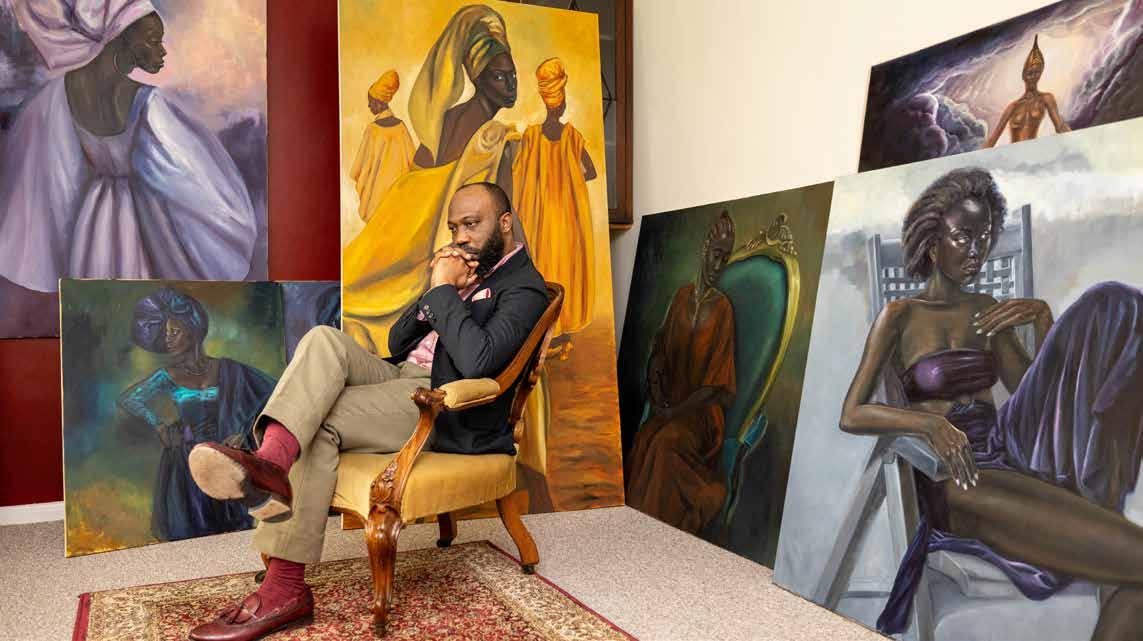
to challenge racial injustice and systemic racism by celebrating Africans’ cultural, political, and socio-economic achievements by examining African spirituality, Black identity and migration, contemporary African politics, Pan-Africanism, and the global African empowerment movement.
As a previous resident of Lagos, I witnessed firsthand and was forced to respond to pertinent issues such as bad governance, political upheaval, and gender inequality. am also intrigued by the fashionable women of Lagos and, by extension, Africa, who exude confidence, beauty, and rhythm.
How easy or difficult has it been for you to follow in your father’s footsteps?
While there may be expectations to follow in my father’s footsteps, believe it is important to carve out my unique path and establish my own artistic voice reflecting my personal experiences and perspectives. In doing so, I can make meaningful contributions in my way as well as celebrate and preserve his legacy. Alongside my artistic practice, founded Omenka, one of the leading galleries in Lagos, and Omenka magazine, the premier art, business, and luxury lifestyle publication in Africa. As an administrator, I have served as the president of the Society of Nigerian Artists, established in 1963 as the professional body for all visual artists in Nigeria.
One might assume you didn’t take an immediate interest in the arts or follow in your father’s footsteps since your first degree was in biochemistry and geophysics. When did you begin to take an interest in the arts, and when did you first realise you could draw?
At an early age, I watched my father paint and sculpt. recall his hardworking ethics and moments of deep quietude, which were often required to inspire important work. My father spotted my artistic gifts in a chance encounter when I was about seven years old. Suspecting was tracing, he insisted repeat the drawing in his presence, following which he declared to my mother, “Oliver draws with mathematical precision.” This encounter would spark my early interest and a lifelong preoccupation.
My background in biochemistry and geophysics influences my artistic practice by giving me a unique perspective on the intersection of science and art. This perspective allows me to incorporate elements of both disciplines into my work. This diverse background also helps me approach artistic challenges with a multidimensional and research-focused mindset, leading to innovative and thought-provoking creations.
Apart from your father, which other artists, both local and international, inspire you, and why?
I am inspired by Rembrandt for his play of light and mastery over portraiture. His influence is particularly significant because the predominant focus of my practice is the exploration of portraiture as a genre, which ranges from realist to allegorical representations of con-
temporary, historical, and mythological subjects.
For many years, you were the president of the Society of Nigerian Artists and witnessed firsthand the massive movement regarding the appreciation of African art. What do you think about where Africa is now in terms of competing, art sales, exhibition spaces, etc.?
Today, African art is gaining global attention owing to a developing domestic scene, as evidenced by a growing number of professionally run galleries, alternative spaces, major events like art fairs and biennales, auction houses, residencies, art foundations, and centres to develop critical thinking, production, and dissemination. Many artists are also studying at prestigious international institutions, while more research and critical writing are published and distributed to new audiences through alternative channels like social media. Consequently, many artists are increasingly represented by international galleries specialising in art from the African continent and have more appearances at major global fairs, biennales, and festivals worldwide. These developments have contributed to the staggering prices of African art on the international market.
However, much of this progress has been privately driven. There must be increased cooperation between the public and private sectors to ensure sustainable growth in the visual arts sector. This will influence policies that, for instance, protect artists’ intellectual property and resale rights, provide infrastructure like purpose-built exhibition spaces, and clearly delineate a value chain by encouraging investment into specialist areas like conservation, valuation, art insurance, transportation, storage, and publishing. Continued advocacy, investment in arts education, and increased collaboration between African artists and international institutions will create more opportunities for local artists to compete globally and secure exhibition spaces worldwide.
You are not only an artist but also a writer. Hows that currently going?
I write regularly on art and investment and modern and contemporary African art for several important publications. also contribute well-researched, scholarly texts to exhibition catalogues, encouraging critical thought and discourse on contemporary art developments in Nigeria and Africa. Omenka magazine will be relaunching soon in a big way.
Lastly, what is your advice for artists, curators, etc., who want to carve a niche in the art world?
My advice for those seeking a niche in art is to stay true to your individualistic perspective and creative ideas (or unique voice and vision). Never be afraid to take risks and push boundaries in your work. It is important to network, collaborate with other artists and institutions, and constantly seek opportunities for growth and exposure. You can create a lasting impact in the art world by staying dedicated, passionate, and open-minded.
THE
SURVIV RS
By Dr. Kemi DaSilva-Ibru
Dear Reader, Welcome to the WARIF Survivor Stories Series, a monthly feature where stories of survivors of rape and sexual violence are shared to motivate and encourage survivors to speak their truth without the fear of judgment or stigmatisation and to educate the public on the sheer magnitude of this problem in our society. The Women at Risk International Foundation (WARIF) is a non-profit organisation set up in response to the extremely high incidence of rape, sexual violence, and human trafficking of young girls and women in our society. WARIF is tackling this issue through a holistic approach that covers health, education, and community service initiatives. WARIF aids survivors of rape and sexual violence through the WARIF Centre - a haven where trained professionals are present full time, six days a week, including public holidays, to offer immediate medical care, forensic medical examinations, psycho-social counselling, and welfare services, which include shelter, legal aid, and vocational skills training. These services are provided FREE of charge to any survivor who walks into the centre.
Raped and Bruised
I am an orphan; I lost my parents when I was eight years old. My dad’s sudden demise led to the death of my mom about three months later. My maternal grandma took me and my brother in, and we lived in her house with my aunts, uncles, and other relatives. It is not easy growing up in a non-conventional typical setting; my brother and had no choice, and my grandma did her best to raise us morally. We had access to quality education, and since I loved calculations, I ended up in a science class during my secondary school days. I’m currently studying computer science at one of the prestigious universities.
I came home for the holidays from the university because my aunt was having her traditional marriage rites. Aunty Chidinma was my mother’s sister and the last born of my grandma. I had known her fiancée (Abel) for several years; although my brother and had some reservations about him, it was not much of a concern since they both loved each other. Aunty Chidinma’s fiancé does not stay in Lagos, so their family rented an apartment with their guest during the entire period. During the traditional rites, I was assigned to oversee the welfare of my aunt’s fiancée (Abel) and his guest. On one of the days, Abel asked me to drop off some items for him and his guest in his room. When I got there, he was so appreciative that he asked me to wait and have a drink with him, which turned down; he felt so let down that I refused, so I decided to oblige his request. He brought out some wine bottles and asked which I preferred, but I told him to choose as I was in a hurry to leave. He suggested a particular brand and poured it into the wine glasses. Immediately, I drank it, and felt a little dizzy. asked if the alcohol content was high, and he responded it was not; he poured some more, which drank, and that was the last I remembered as became drowsy. I was slipping in and out of consciousness, and felt his hand all over my naked body on the sofa as he raped me. did not know how long he took until I woke up later at night tired, and he began apologising that he did not know what came over him. He confessed that he had been fantasising about having sex ever since the first time he saw me, and he could not resist the urge. I was so heartbroken because I was a virgin, and I had planned on keeping my virginity until my wedding night. Abel kept pleading with me that it was the devil’s work. stormed out of the room. felt sorry for my aunt and uncertain about what to
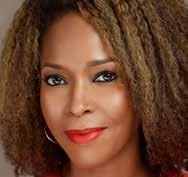
do. He kept calling, pleading, and sending messages to keep it a secret while promising that it would never happen again. I avoided him, and I did not mention anything to anyone, although my brother suspected something was wrong with me. However, I pretended until the engagement ceremony was over, and I immediately went back to school.
About six months later, which was the set wedding ceremony, I would not have attended if it had not raised suspicions. My aunt assigned me the chief bridesmaid role, which I turned down, but she insisted, so I reluctantly accepted the role. I executed my role diligently while minimising contact with my aunt’s fiancée, Abel, until the last night when my aunt, who had planned a surprise for him, asked me to go to his guest room to set the gift items. reluctantly did, and he could not wait to see me alone. Abel asked why I was avoiding him, and I replied, “You know why. He began telling me how much he loved me even more than my aunt, and I asked him why he was marrying her, and he said it was because they had been together for long. I just continued setting up the place just like my aunt instructed until he came, held me down forcefully and dragged me to the nearby sofa, he covered my mouth when I tried to shout, and then he placed me on the chair and forcefully inserted his penis into my vagina and raped me in the living room of the apartment. The apartment had a CCTV camera.
This time, I was not ready for any plea; called my brother immediately to come over, and he came, and I explained both incidents to him. My brother called my aunt and close relatives. The wedding was cancelled. I sustained injuries in my vagina and felt pains all over my body. We reported the case to the police station. The perpetrator, Abel, was arrested, and the case was charged to court.

At the police station, we were referred to WARIF Rape Crisis Centre, where I was able to access medical examination, treatment and psycho-social counselling. The counsellor encouraged me and helped me to know that I was not alone and to begin my healing journey from trauma. My counselling sessions with the counsellor at the centre have been so impactful and very helpful. was taught coping mechanisms to help deal with my emotions, and I can confidently say I am in a safe space of hope, healing and peace. My aunt also had counselling sessions, and she has gone on to build a business and into a healthy relationship. She’s grateful she did not end up with an abuser. As at the last court session, the case is going well, and I’m glad I will get justice for the crimes committed against me. We are grateful we had access to WARIF and that all the services were rendered free of charge. had access to group therapy sessions, which helped me to develop a sense of belonging and heal mentally, emotionally and psychologically.
Many thanks to WARIF and the entire staff.
Many thanks to WARIF and the entire staff.
*Real name of the survivor changed for confidentiality
survivor, please know that you are not alone and it is not your fault. Help is available. If you have been
Dear
raped or you know someone who has, please visit us at: The WARIF Centre 6, Turton Street, off Thorburn Avenue, Sabo, Yaba or call our 24hour confidential helpline on 0800-9210-0009 For questions or more information please contact: info@warifng. org
Sunday, June 16, 2024 Vol. 22, No. 10624 COVER Sunday, June 16, 2024 Vol. 22, No. 10624 16 17
IS EXPENSIVE SKINCARE REALLY BETTER?
You’ve seen it: that tiny jar of face cream sitting elegantly on a lit-up shelf with a price tag that makes your wallet weep. The question pops into your mind like an unsent text message: Really? As you hold the cream, pondering whether it holds the secret to porcelain skin, you’re not just holding a product but a puzzle.
When skincare options are plentiful, and confusion is rampant, figuring out whether to invest in high-end potions or stick to budget-friendly buys is akin to navigating a cosmetic labyrinth. These days, every other bottle promises a miracle, and the allure of expensive skincare is undeniable. But does a steeper price tag guarantee better results? Are budget-friendly buys just as miraculous? The straightforward answer? Not necessarily.
Dr Joseph, a renowned dermatologist in Lagos, asserts, “A higher price tag doesn’t necessarily mean a better product. Often, you’re paying for the brand name, luxurious packaging, and aggressive marketing.” Indeed, the cost of a skincare product can be heavily influenced by its aesthetic appeal and the story the brand tells, neither of which guarantees a superior formulation.
This is very true. Many factors inflate costs that have nothing to do with the ingredients list. Think about the chic packaging that looks oh-so-elegant on your vanity or the marketing campaigns featuring celebrities with impossibly flawless skin. These elements contribute to the cost but do nothing for your skin. Then there’s the myth of “premium” ingredients. While it’s true that some expensive products contain high concentrations of active ingredients, this isn’t a luxury only the well-off can afford. Many affordable brands have harnessed the same powerful ingredients, from retinol to peptides, and offer products just as potent as their pricier counterparts.
The real magic lies in knowing what your skin needs. A $300 serum might seem like the holy grail, but if its star ingredient isn’t something your skin craves, your wallet will cry for no reason. For example, someone battling acne will find more value in a product rich in salicylic acid, which can be found in treatments at various price points, rather than splurging on a luxe moisturiser touted for its rare oils that do little for blemish-prone skin. Personal budget and lifestyle also play crucial roles in your skincare choices. It’s vital to find a routine that fits not only your skin needs but your financial reality as well. The beauty industry is booming, with innovations sprouting left and right, making effective skincare accessible at all price ranges. This reassures you that effective skincare is not limited to the most expensive products.
On the other hand, the placebo effect of luxury can not be underestimated. It feels good to treat oneself to a gold-flecked face mask or a moisturiser infused with truffles, and if that experience brings you joy, it’s money well spent.
Ultimately, the question isn’t whether expensive skincare is better; it’s about what resonates with you. You should approach skincare with informed choices, understanding that the value lies not in the price but in the product’s alignment with your skin’s unique needs and your personal values. This empowerment allows you to take control of your skincare journey, making choices that are right for you. In the grand scheme of things, whether you swipe your card for a high-end hydrator or a drugstore moisturiser, remember this: The best skincare is the kind that leaves both your skin and your bank account feeling healthy. So next time you are at the skincare aisle, channel your inner beauty detective. Look beyond the shiny labels and hefty price tags. Your perfect skincare match might be hiding in plain sight, and it might just cost less than your next takeout.
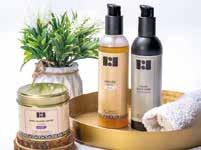

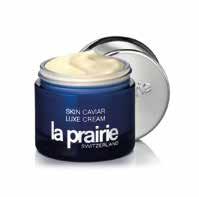
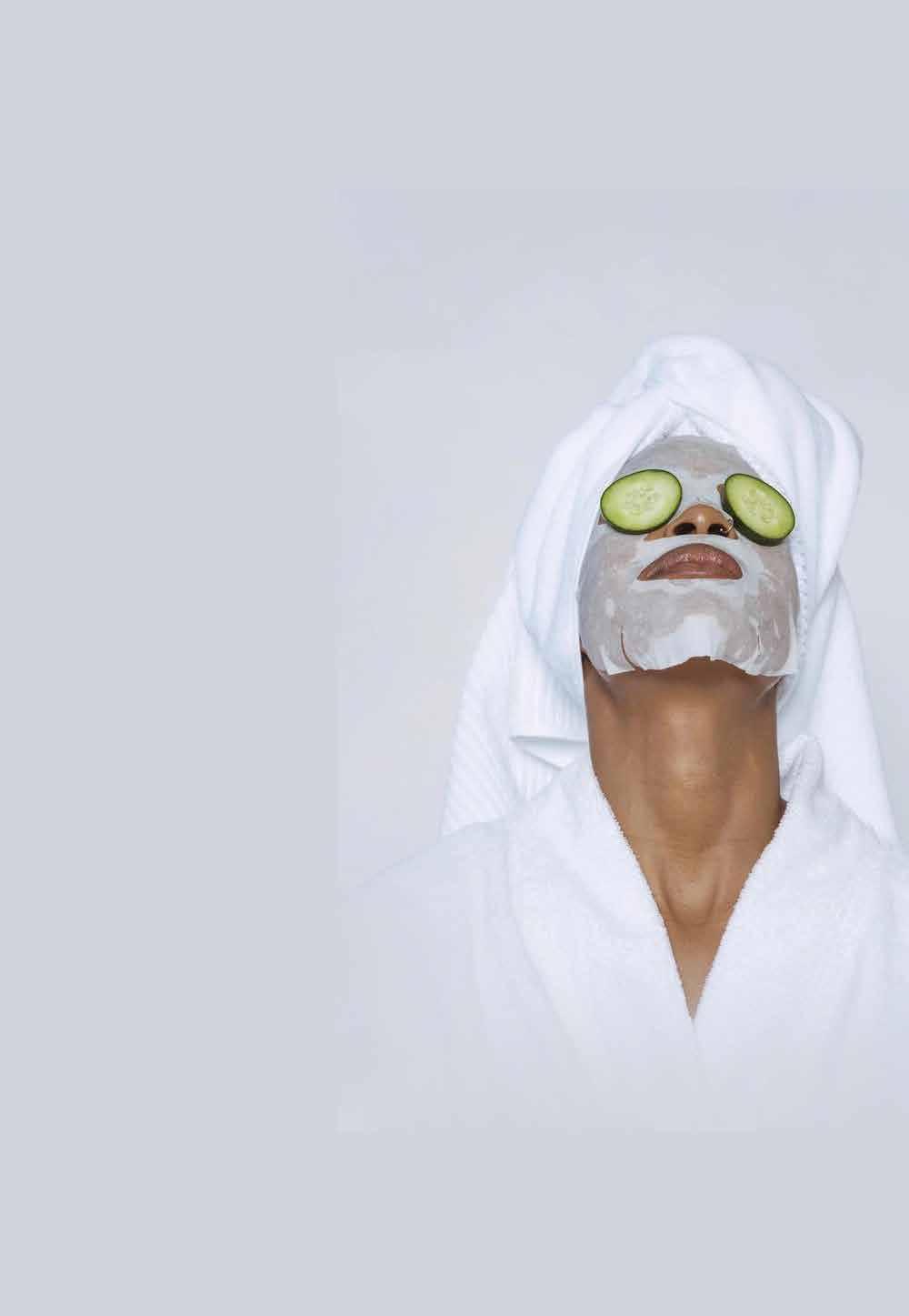
GLOW GETTER: THE COMPLETE GUIDE TO ACHIEVING
A FULLBODY GLOW

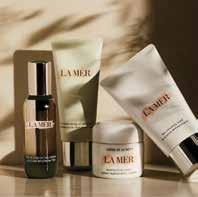

When it comes to skincare, the face often steals the spotlight. With countless products like serums, masks, and moisturisers specifically designed for the face, it’s easy to forget that the skin below the neck needs attention too. However, achieving a full-body glow is just as important and can elevate your look and feel. Here’s a comprehensive guide to help you extend your skincare regime to your entire body, ensuring radiant, healthy skin from head to toe.
Start with a Scrub
Kick off your skincare party with a bang! Grab a body scrub and dance around in the shower as you buff away those pesky dead skin cells. Choose natural scrubs with sugar or salt and swirl in some nourishing oils. Not only will you emerge with baby-smooth skin, but you’ll also feel refreshed and invigorated—like you’ve just done the cha-cha with your skin cells!
Moisturise Like It’s Your Religion
Once you’ve scrubbed away the dullness, it’s time to slather yourself with moisture. Lather on a rich cream or body butter loaded with goodies like shea butter or hyaluronic acid. Do it right after your shower to trap that moisture and treat your body like the temple it is. Pay extra attention to those often-neglected spots like elbows and heels—they deserve love, too!
Drink Up for Dewy Skin
Hydration isn’t just about lotions and potions—it’s an inside job! Guzzle water like it’s going out of style. Aim for those eight glasses a day and jazz them up with a slice of lemon or cucumber for a zesty twist. It’s like a spa day in every sip!
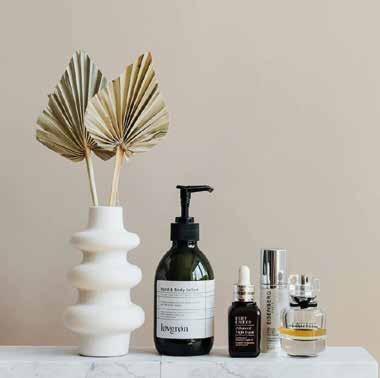
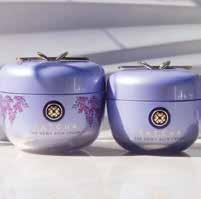
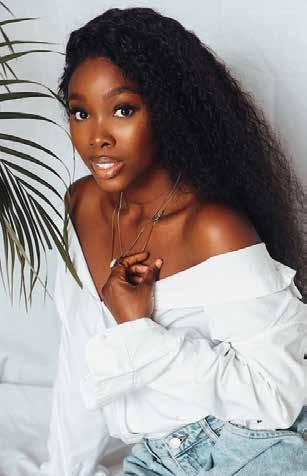
Shield Yourself from the Sun Sunscreen isn’t just for the beach—it’s for every day. Protect your precious skin from the sun’s rays with a broad-spectrum SPF 30 or higher. It’s like wearing armour but way more relaxed and less clunky. Reapply as if your glow depends on it (because it does!).
Eat Your Way to Radiant Skin
What’s on your plate can be your skin’s best friend or its worst enemy. Load up on antioxidant-rich foods like berries and nuts, and don’t forget those omega-3 champions found in fish and flaxseeds.
Get Moving, Gorgeous!
Exercise gets your blood pumping and your skin glowing. It’s like taking your cells out for a run—sweat out the toxins and shower off the evidence. It’s a natural detox that leaves you looking as good as you feel.
Nighttime Is the Right Time for Pampering
While you’re off in dreamland, your skin is getting down to business. Slather on a rich night cream; choose one with retinol to give your skin some overnight magic. And don’t forget about your sheets—smooth, clean bedding is the secret to waking up fresh-faced and fabulous.
Tailor Your Treatment
Every skin has its own needs. Customise your approach, whether it’s acne on your back or dry patches that need soothing. Treat each issue with star-studded care and targeted products.
Seasonal Skin Switch-Up
Just like your wardrobe, your skincare routine needs a seasonal shuffle. Richer moisturisers during the harmattan season, more frequent exfoliation in the dry season —it’s all about adapting to keep your skin happy all year round.


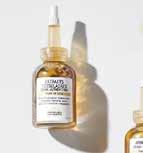

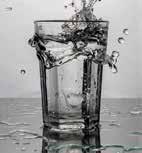
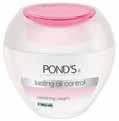
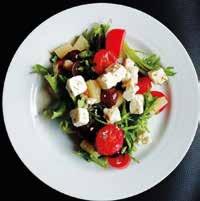


ONO BELLO
IFY OKOYE
Sunday, June 16, 2024 Vol. 22, No. 10624 Sunday, June 16, 2024 Vol. 22, No. 10624 18 19
DOLAPO AMUSAT
Bridging the Gap Between Tech and Creativity
I remember the first time I met Dolapo. I was immediately captivated by the sheer brilliance of this 5-footsomething man and how he knew the right words to articulate his thoughts. It didn’t take long for me to figure out he was a “tech bro.”
As the founder of WeTalkSound, a dynamic 360 creative company, Dolapo’s journey reflects a fusion of passion, skill, and relentless ambition. From collaborating with global brands to championing emerging artists, his story is a testament to the power of intersectionality in shaping the future of business and culture. Through his innovative endeavours at WeTalkSound and his impactful contributions at Google, Dolapo continues to redefine what it means to be a visionary leader in today’s digital age.
Interview Ayo Lawal
You have an impressive background spanning both the tech and creative industries. How did you first discover your passion for merging these two worlds?
As far as can remember, I was always excited by both artistic stuff and quantitative stuff. I was the student who would do well in both Social Studies and Math. I have always liked writing and music, and I knew I didn’t want to give up that side of myself, even if I was pursuing a technical course like Electrical Engineering. figured in uni that I could view my ability to play both sides as a strength and fully embrace it. The first serious venture built was an art collective at my uni, which we called ‘UitesWrite’. We collected written art from students and alumni and published the compilation as a digital anthology, and we won an award for ‘Best Student Initiative’ in the school.
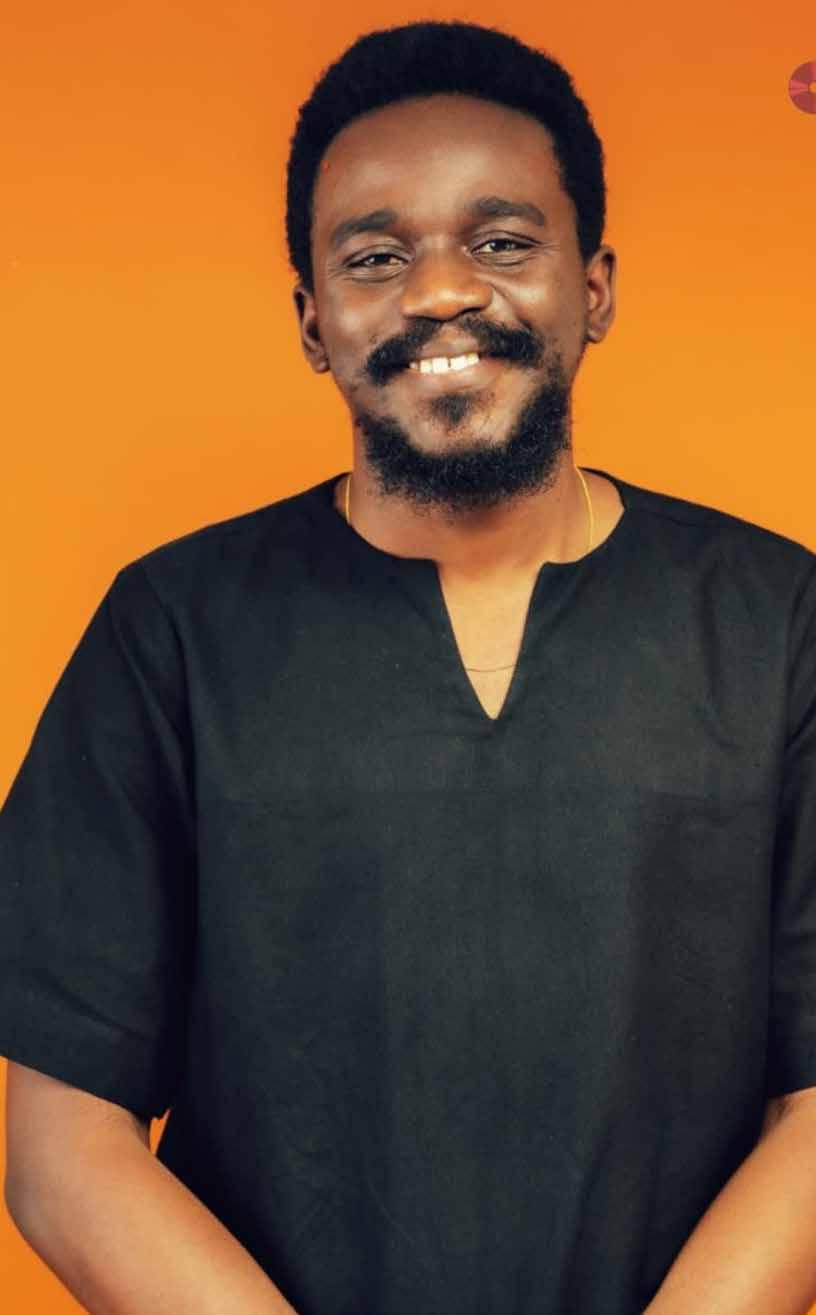
That was my first tangible project, and I did it while studying electrical engineering. After that, it was like a free flow from ideation to execution of my other ideas.
Talk to us about WeTalkSound. What inspired you to start this tech-enabled creative company, and what sets it apart from others in the industry?
Initially, it was just my love for building digital communities and music. After UitesWrite, I became more confident, and I thought could build a community of music-inclined creatives first across my uni, Nigeria, and across the world. That was how WeTalkSound started as a WhatsApp group of music enthusiasts. Over time, we learnt so much about how the music industry works, especially the intersection of music and
digital technology - how to leverage the Internet to promote music, social media, how to make money from content online, etc. We also experimented with building digital products and fan-engagement microsites and did a lot of data analysis to reveal insights into the Nigerian music industry.
Doing all these gave us a lot of understanding and positioning around being a strongly digitally enabled creative collective. Over time, people started approaching us to help them with design, marketing, strategy, insights, building products, and more, and we decided to actually start an agency to provide these services at scale.
Now, we’re a 360-degree company with a strong team that understands the creative and digital landscapes and can solve various types of problems across both. What stands out is our approach; we apply the best relevant tech tools, platforms, and knowledge to solve creative industry problems. We’re also very in touch with the audience and the general pulse of young Africans. The fact that we do a bunch of interconnected things means we can tap into multiple places to figure out how to solve a client’s challenges.
With divisions ranging from media and marketing to fashion and events curation, how do you ensure synergy among these diverse areas within WeTalkSound?
I believe a lot of things in the creative industry are interconnected. We have media, agency, fashion, label services and events. This means we can provide end-to-end services to a client. So, we deeply understand what they want to achieve and look at the best combination of our services, ideas, and tech to lead to the best results for the client or project. So, think of us as a creative tech hub with several tricks up our sleeve, and we unveil them as they are relevant to the project we’re working on. The team is also very collaborative, and everyone’s generally curious, which also helps.
Through WeTalkSound, you’ve worked with notable brands and artists such as EMPIRE, Sony Music, and Davido Music Worldwide. What strategies do you employ to maintain successful partnerships in such a competitive industry?
We’ve worked on different projects with several brands, record labels, and artists. It’s been an exciting run. The business landscape here is an interesting mix of formal and informal. As a CEO, your biggest job is identifying business opportunities and partnerships that bring in revenue. One key thing for us is differentiation - because how we approach the work is different and unique, it’s easier to acquire and retain clients. Also, being willing to go above and beyond to add value to the clients and partners goes a long way.
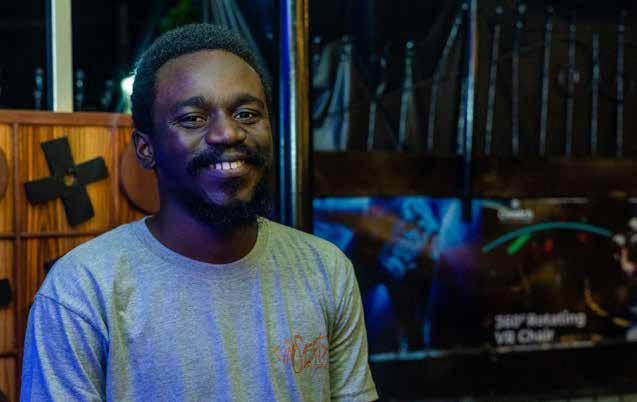
try. That’s a rare privilege and one don’t take for granted.
As someone shaping Nigerian music under 30, what do you see as the biggest challenges and opportunities for young creatives in the industry today? There’s the challenge around access to resources to bring their ideas to life. These resources include funding, knowledge, networks, and everything else. It’s become an increasingly competitive space, and there are so many hurdles to scale for young people today. On the flip side, the biggest opportunities are the Internet and digital platforms and the ability to reach millions of people simultaneously via your mobile phone with whatever art form you practice.
I’ve worked on some exciting stuff from projects around music, such as the Rema O2, Asake O2, and Trace Awards live streams that have allowed millions of Africans to experience these groundbreaking events from the comfort of their homes on YouTube.
homes on YouTube. I have also worked on driving education projects that give young Africans access to digital skills and help them grow their careers. One more thing: worked on the Rashidi Yekini doodle project last year - was particularly excited to see it become one of the biggest conversations on the Nigerian Internet, and I felt very proud. Now, most of my work revolves around helping to tell stories about Google products in Africa and connect to users.
Over time, we learnt so much about how the music industry works, especially the intersection of music and digital technology - how to leverage the Internet to promote music, social media, how to make money from content online, etc.
Being named a professional Grammy Recording Academy member is a remarkable achievement. How has this recognition impacted your career and aspirations within the music industry?
I’m grateful about that one in particular because it’s a testament to my work with WeTalkSound and in the creative space in general. It just generally wows people when they find out. It’s apparently a really big deal. The best part for me is being part of a global network of some of the most influential people in music worldwide and having the power to advocate for changes that could impact the international music indus-
Transitioning from roles at companies like Bolt and KPMG to your current position in Product Marketing at Google, what lessons have you learned along the way, and how have they influenced your approach to your work now?
My approach has always been to learn how things work at successful companies and figure out how to apply that to my own companies and projects—just seeing the structure and how a company with over a hundred thousand employees keeps moving and growing shows that it’s also achievable for me. On the tech side, there’s also a lot I’ve learned in terms of understanding emerging tech and how to make them relevant and apply them to the creative space. Another thing working at places like these gives is global exposure, working on international projects with colleagues from across the world and learning about their cultures and stories, which widens your worldview as a creative and helps you understand the world at large better.
Your work at Google focuses on projects spanning education and creativity. Can you share any exciting initiatives or collaborations you’re currently involved in?
I’ve worked on some exciting stuff from projects around music, such as the Rema O2, Asake O2, and Trace Awards live streams that have allowed millions of Africans to experience these groundbreaking events from the comfort of their
How do you stay inspired and creative in your day-to-day work, especially when faced with challenges or obstacles? How do you keep a balance with everything that you have going on?
It’s difficult to stay balanced, but I’m used to managing multiple projects simultaneously, so it’s not exactly new. There’s so much inspiration floating around and so many awesome things people are doing worldwide. These things remind me that I have so much to do, and they push me to do even more. I also have a great network of very supportive people around me, and sometimes, I hold on to them for support, but for the most part, my long-term vision drives me.
Looking to the future, what are your goals and aspirations for yourself and WeTalkSound? How do you envision continuing to impact the tech and creative industries locally and globally?
The future is really about scaling and becoming more relevant on a global level. Working on more projects worldwide, having access to the most important rooms and tables worldwide, and just leveraging the power of digital tech to showcase African creativity to the world. On a personal note, the goal is to be that guy, to bring my understanding of tech, culture and business together and sit in rooms with the biggest brands, companies, and governments and help them build products and initiatives that will positively shape the world’s future. With WeTalkSound, build a stronger team, stay ahead of the emerging tech curve and become one of the most important creative companies in the world.
Sunday, June 16, 2024 Vol. 22, No. 10624 Sunday, June 16, 2024 Vol. 22, No. 10624 20 21
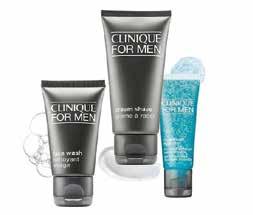

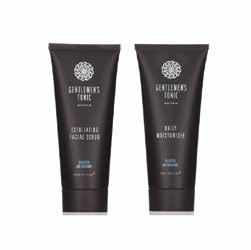
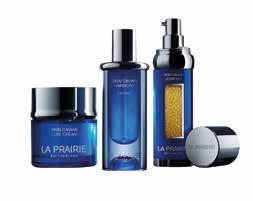
EVERY MAN SHOULD HAVE A SKINCARE ROUTINE
Gone are the days when skincare was reserved for women. Today, more men are waking up to the importance of caring for their skin. With increased awareness and availability of men’s skincare products, there’s no reason why every man shouldn’t indulge in a proper skincare routine. Here’s why a little grooming could be the game-changer you never knew you needed.
Skincare is Self-Care
First and foremost, skincare is a form of self-care. Taking time to look after your skin isn’t just about looking good—it’s about feeling good, too. Implementing a basic skincare routine can be a soothing ritual that offers a much-needed break from the hustle and bustle of daily life. It’s a moment in the day that’s just for you, helping to reduce stress and enhance your overall well-being.
Prevention is Better Than Cure
Men’s skin tends to be thicker, oilier, and ages differently from women’s. While these differences can be advantageous, they also mean men face specific skincare challenges. Acne, razor burn, and increased exposure to damaging environmental factors are just a few of those issues.
A solid skincare routine helps manage these conditions before they become more problematic. Regular cleansing and moisturising can prevent severe acne and reduce irritation caused by shaving while using sunscreen can protect the skin from long-term damage caused by UV radiation.
Looking Good is Professional
Like it or not, appearance matters in the professional world. Healthy, well-cared-for skin projects an image of someone who takes pride in their appearance and, by extension, their work. A simple cleansing, moisturising, and sun protection routine can keep your skin looking its best. Remember, first impressions are powerful, and healthy skin plays a significant role in making a good one.
Age Gracefully
We all age, but we can choose how we do it. Investing in your skin’s health can pay dividends in a smoother, more resilient complexion as you age. Anti-ageing creams and serums are not just for women. Products containing retinoids, peptides, and antioxidants can reduce the appearance of wrinkles and fine lines, giving your skin a fresher, more youthful look. It’s about looking as vibrant and energetic as you feel, regardless of age.
It’s Easier Than You Think
Many men steer clear of skincare, assuming it’s too complicated or time-consuming. However, effective skincare doesn’t have to involve many products or take up much time. A basic routine that includes cleansing, moisturising, and applying sunscreen can take as little as five minutes. You may be tempted to expand your routine once you see the benefits of these simple steps. Products like exfoliants and masks can be used occasionally to enhance your skin’s health and appearance.
Tailored to Your Needs
The beauty of modern skincare is that there’s a product for every need and skin type. Whether you have dry, oily, sensitive, or combination skin, there are products specifically formulated to address your unique challenges. Personalised skincare is not just more effective; it also means you’re saving money on products that aren’t right for you.
A Boost in Confidence
At its core, a good skincare routine boosts your confidence. Knowing you look your best can significantly affect your social interactions and how you feel about yourself. Whether it’s the confidence to go out more, the assurance during a professional meeting, or just feeling good when you look in the mirror, the psychological benefits are palpable.


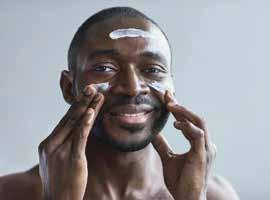

Intermittent fasting (IF) has steadily garnered attention—not as a mere trend but as a lifestyle choice with profound health benefits. But what exactly is it, and why are health enthusiasts swearing by its results?
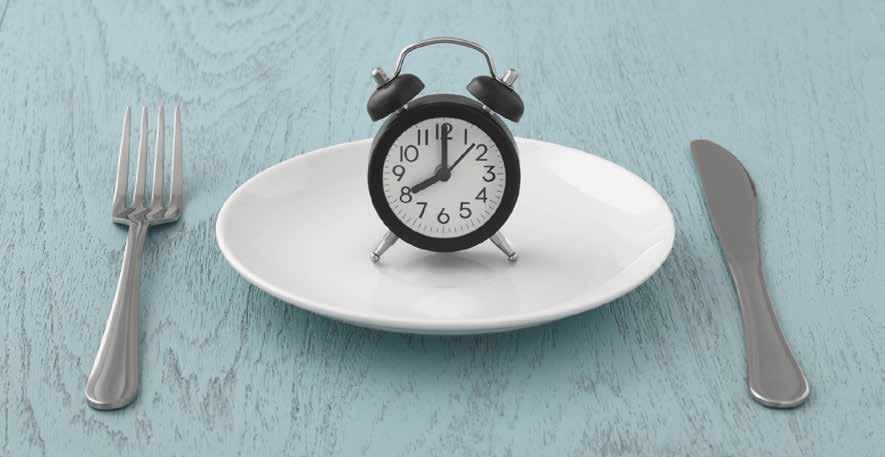
IINTERMITTENT
FASTING:
EVERYTHING YOU NEED TO KNOW
ntermittent fasting isn’t about what you eat but when you eat. This approach cycles between periods of eating and fasting, ranging from a few hours to a day or more. Unlike diets that hinge on caloric restriction, IF focuses on timing, allowing the body to enter a fasting state that can spur metabolic and cellular changes.
Popular Methods of Intermittent Fasting
The 16/8 Method: Perhaps the most popular form, this method involves fasting for 16 hours each day and eating during an 8-hour window. For many, this means skipping breakfast and eating from noon to 8 p.m.
Eat-Stop-Eat: This involves a 24-hour fast once or twice a week. It’s challenging but effective for those who can manage longer fasting periods.
The 5:2 Diet: In this version, you consume your regular diet five days a week and reduce calorie intake to about 500-600 calories on the other two days.
Science-Backed Benefits of Intermittent Fasting
Weight Loss and Improved Metabolism: By limiting the eating window, IF can lead to reduced calorie intake and significantly help with weight loss. The fasting period encourages hormonal balance, enhancing metabolism and increasing fatburning rates.
Enhanced Brain Function: Fasting increases the production of brain-derived neurotrophic factor (BDNF), a protein linked to decreased risk of mental health issues and improved cognitive



function.
Heart Health: IF can improve various risk factors for heart disease, such as inflammatory markers, blood sugar levels, blood triglycerides, and cholesterol levels.
Cellular Repair and Longevity: Fasting triggers autophagy, a process where cells self-cleanse and remove dysfunctional proteins. This can protect against diseases, including cancer and Alzheimer’s disease, and potentially increase longevity.
How to Get Started with Intermittent Fasting
Choose Your Plan: Assess your lifestyle, health status, and goals to choose a fasting method that feels sustainable. It’s essential to consider your work schedule, social life, and overall health before diving in.
Gradual Transition: If you’re new to IF, start with a shorter fasting period and gradually increase it. Jumping straight into a 16-hour fast can be daunting and may lead to discomfort or binge eating.
Hydration is Key: During fasting hours, it’s crucial to stay hydrated. Water, herbal teas, and
black coffee are excellent for keeping hunger at bay without breaking your fast.
Listen to Your Body: The initial transition might bring some hunger pangs, headaches, or lethargy. These symptoms typically subside once your body acclimatizes to the new eating schedule. However, if you experience severe symptoms, it’s important to reassess your approach.
Balanced Meals: When you do eat, focus on nutritious, balanced meals rich in vegetables, proteins, fats, and carbohydrates. This is crucial to ensure your body gets the necessary nutrients within the eating window.
Common Myths and Facts about Intermittent Fasting
Myth: Fasting puts your body into starvation mode.
Fact: Short-term fasting increases metabolic rate through norepinephrine, helping you burn more calories.
Myth: Fasting causes muscle loss.
Fact: Studies show that weight loss with IF is typically due to fat loss, not muscle loss, especially when combined with resistance training.
Myth: Women should avoid intermittent fasting.
Fact: While some studies suggest that IF might impact menstrual cycles if calorie intake is too low, many women have found IF beneficial. It’s vital for women to monitor their response closely and possibly adapt to the fasting regimen.



Sunday, June 16, 2024 Vol. 22, No. 10624 Sunday, June 16, 2024 Vol. 22, No. 10624 22 23









































































 OLUCHI AMAJUOYI
OZINNA ANUMUDU
ADESUWA AIGHEWI
STEPHANIE COKER
OLUCHI AMAJUOYI
OZINNA ANUMUDU
ADESUWA AIGHEWI
STEPHANIE COKER
















































